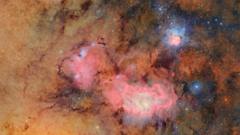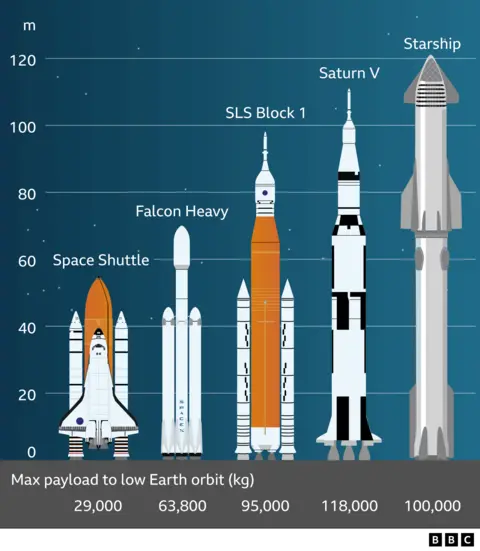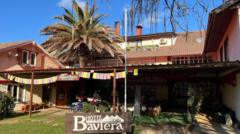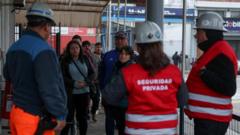A state-of-the-art telescope situated in the Chilean Andes has unveiled its inaugural celestial images, providing a glimpse into the extensive capabilities of this cutting-edge astronomical facility. The Vera Rubin Observatory's stunning portrayal of the Trifid and Lagoon nebulae illuminates vibrant gas and dust clouds, located 9,000 light years from Earth, highlighting its unprecedented ability to capture deep-space phenomena.
Armed with the most advanced digital camera in the world, experts predict the Vera Rubin Observatory will significantly enhance our comprehension of the cosmos, with the potential to locate a ninth planet and identify hazardous asteroids in Earth's vicinity. Over the next decade, the observatory promises to continuously survey the southern night sky, tantalizing astronomers with data that could redefine our understanding of the universe, including deep inquiries into dark matter.
Professor Catherine Heymans, the Astronomer Royal for Scotland, stated, "I have focused my efforts on reaching this milestone for about 25 years. The vision of this amazing facility and its surveys is finally becoming a reality." As a pivotal contributor to this international initiative, the UK will manage critical data centers to process the exceptional detail captured by this powerful telescope.
Prior to the image release, BBC News visited the observatory, perched atop Cerro Pachón—an optimal vantage point renowned for its darkness, ideal for celestial observation. Engineers meticulously craft the environment surrounding the telescope to ensure that no extraneous light interferes with its observations, underscoring the importance of maintaining this pristine setting.
With a 3,200-megapixel camera, which dwarfs the resolution of contemporary devices, the telescope utilizes a unique three-mirror system to capture vivid images of the sky every 40 seconds during its nightly sessions. This revolutionary tool is designed for a ten-year Legacy Survey of Space and Time, collecting immensely detailed knowledge of the universe, including supernova explosions and ancient galaxies.
The venture invites a multitude of researchers to analyze data alerts, expected to peak at approximately 10 million nightly, focusing on the cosmos' most dynamic phenomena, mapping our solar system's evolution, and unraveling mysteries surrounding dark matter. Additionally, its continuous monitoring could enhance defenses against potential astronomical threats, such as rogue asteroids approaching Earth.
Professor Alis Deason from Durham University emphasizes the transformative potential of this initiative, stating it will generate the most expansive dataset ever gathered for investigating our galaxy. Observations may extend up to 1.2 million light-years, penetrating regional space previously unconceivable to discover the historical remnants of star systems within the Milky Way.
In pursuit of newfound knowledge, the Vera Rubin Observatory stands poised to address long-standing astronomical enigmas, including the enigmatic search for Planet Nine, lurking in the distant reaches of our solar system. Professor Heymans concludes, "It will take time to fully grasp the capabilities of this exceptional observatory, but I am incredibly eager to explore what it reveals."

















